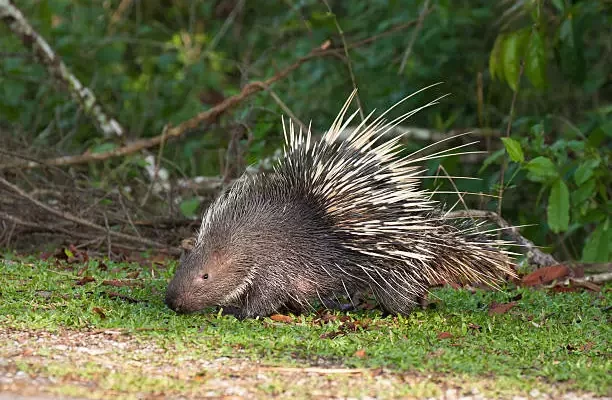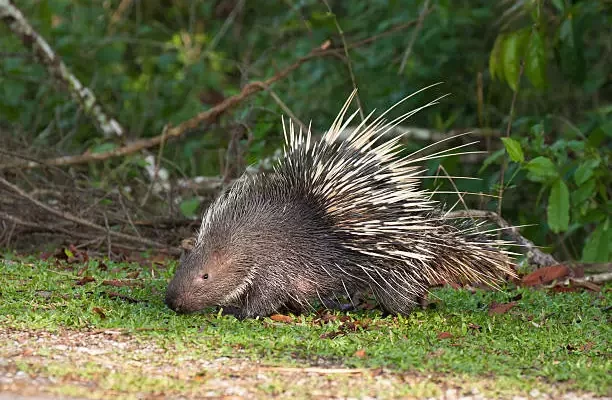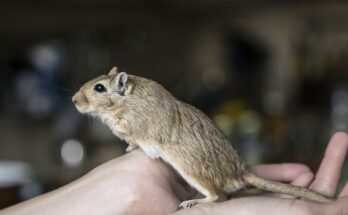The porcupine (Erethizon dorsatum), commonly known as the “pig”, “hedgehog” or “pen”, is the second largest rodent in Alaska after the beaver. Its wide range includes almost the entire state except the northern slope of the Brooks Range, the Seward Peninsula, and the delta regions of the Yukon and Kosciusko Rivers, all essentially treeless areas. Although typically found in coniferous forests, their distribution spans a wide range of vegetation types from semi-desert to tundra. The porcupine is one of the most unique and iconic mammals in the Northwoods. And thanks to its short legs and thick body, it is also one of the slowest. Of course, a porcupine doesn’t really need anything faster than first gear, as its feathers provide excellent protection against most predators. But it still amazes me that a short-legged, non-hibernating herbivore can thrive in the deep snow of northern New England. I remember following the fishermen’s tracks in the deep snow a few years ago. For an hour or two the tracks meandered wildly through the forest, from bushes to fallen logs to blackberry bushes and thick stands of trees. I meandered back and forth until the tracks suddenly straightened out and led a straight line through hundreds of feet of hardwoods to a rocky hemlock field where porcupines abounded. It is as if the fisherman happened to take shelter where a snowshoe hare or grouse could be found before deciding to go to Porcupineville in the hope of finding the resident in a vulnerable situation.
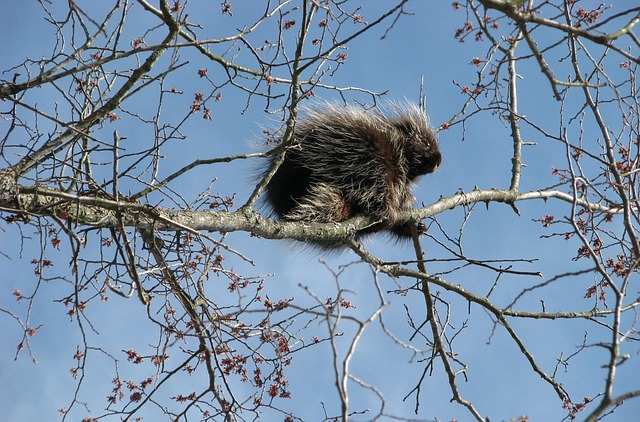
Unique Mammal:
The porcupine’s special coat makes it unique among mammals in the Western Hemisphere. The porcupine’s coat consists of a soft, brown, woolly undercoat and coarse, long guard hairs. These guard hairs hide the feathers until the porcupine becomes excited. The scales are longest on the shoulders and back and when they are raised they push forward the guard hairs and form a crest. On the front the feathers are about 1/2 inch long, on the back, they can be up to 5 inches long. These barbs are stiff, filled with a foam-like core, and, as many dog owners know, barbed at the tip like a fishing hook. In total, the porcupine is estimated to have over 30,000 quills, so it will not be incapacitated by a single encounter with an enemy, where several hundred quills may come loose. When the spines are lost, they are replaced by new spines that are white, and sharp, but firmly anchored in the skin until they mature. However, there are no spines on the muzzle, legs, and underside of the body, which makes it vulnerable to wolves, wolverines, lynxes, foxes, bears, and sometimes even owls, which are their predators.
PORCUPINES_2:
Few preparations are made, such as a den or a bed. The baby porcupine, also known as porcupine, weighs between one and two kilos at birth and is born with open eyes. A newborn porcupine’s quills are soft at birth and harden within half an hour after birth. In autumn, most young porcupines live separately from their mothers and lead solitary lives for large parts of their lives. An adult porcupine can grow up to 39 inches long, including a 9-inch tail, weigh between 15 and 28 pounds, and have a lifespan of 5 to 7 years.
Porcupine In Winter:
In winter, the porcupine does not hibernate. However, they spend a lot of time in a tree (or under a tree) and usually do not venture further than 100 meters from the winter den. During the lean winter season, porcupines feed mainly on the soft inner bark of trees (the cambium layer). This can have devastating consequences for the tree as the cambium transports moisture and minerals to the leaves and branches. If they completely overwhelm the tree with their food, the tree will die. As spring progresses, porcupines eat the leaves of herbs and shrubs as well as racks of alder, poplar, and willow. Being good swimmers, they feed on shallow water plants. One of the porcupine’s best-known and least-loved eating habits is chewing wood and leather in and around camps and houses. Both salty and non-salty objects are gnawed, suggesting that the habit stems not only from a desire for salt but also from the need to sharpen the ever-growing teeth. Perhaps one day a plywood containing a porcupine repellent could be developed that would benefit many outbuildings here in Alaska! If artificial objects are not available, the porcupine will chew on bones and shed its horns.
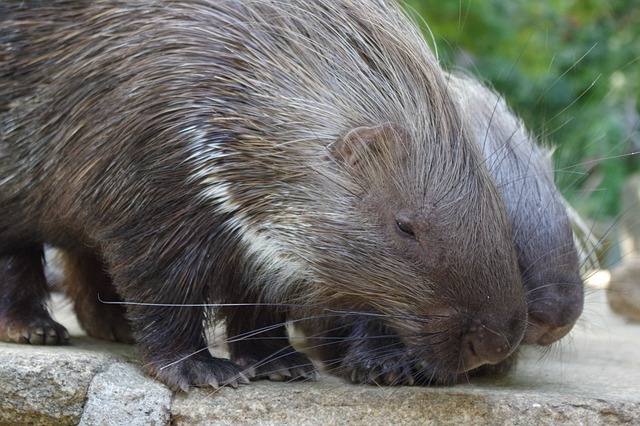
Porcupine as a Useful Habitat:
Porcupines also have some useful eating habits; Mistletoe, a parasite on trees, is a favorite food.
Because the porcupine is myopic and slow, it is a common victim on the roads, especially in winter when the snow is thick. Their tracks can be recognized on the solid imprint of the entire sole with long scratch marks and sometimes marks where the tail has been dragged. When the snow is soft and deep, the porcupine trail becomes more of a hollow through the snow. Inland Athabaskan Indians still use porcupine quills to make beautiful earrings and other decorative items. The easiest way to collect feathers (barring a traffic accident) is to lightly tap a porcupine on the back with a piece of Styrofoam and later remove the feathers from the material. They don’t run very fast (more like shuffling or waddling) and the myth that they “throw their feathers” circulates because when a porcupine is attacked it turns away from its tormentor and lifts the skin on its back, thereby attacking the attacker a bunch of them get nails. Unnecessary killing or over-harvesting of spines should definitely be discouraged. Porcupines are an integral part of Alaska’s wildlife and occupy an important place in classic literature.
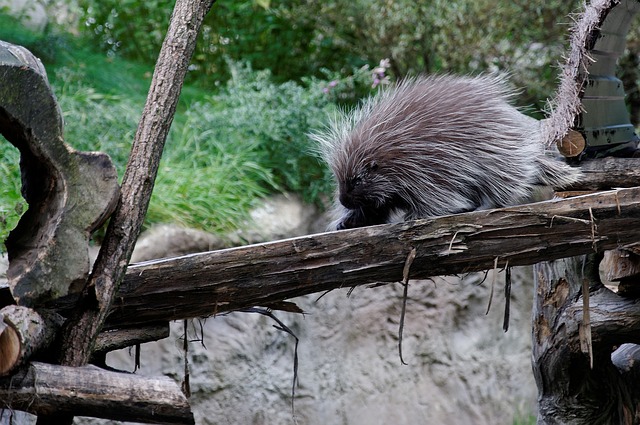
Poem
Henry Wads Worth Longfellow wrote so eloquently in “The Song of Hiawatha”:
“The hedgehog from a hollow tree
He looked at him with his sleepy eyes,
Shoot their shining spikes like arrows,
Say in a sleepy murmur:
By the eddy of his whiskers,
Take my feathers, oh Hiawatha!
He gathered the thorn from the ground,
All those shiny little arrows”…
FAQS:
In Pakistan, Porcupine is distributed in Punjab, Sindh, mountainous areas of Khyber Pakhtunkhwa, and in steppe mountain regions of Baluchistan up to 2,750 m elevation (Lovari et al.
However, porcupines are not related to pigs, and their meat is generally considered halal for Muslims. It is important to ensure that the animal is slaughtered according to Islamic guidelines for it to be permissible. Consulting with a knowledgeable religious authority is advised for specific dietary guidance in Islam.
What is a porcupine? The word porcupine means “quill pig” in Latin; however, porcupines are large rodents and have no relation to pigs. Porcupines are the largest and heaviest of all African rodents. The head is roundish and rather domed, with a blunt muzzle and small eyes and ears.
Fun Facts
Porcupines are covered in about 30,000 quills. They cannot throw or shoot their quills. …
While porcupines spend most of their time on the ground, they are good climbers and regularly climb trees in search of food and occasionally even build nests in trees. They are also good swimmers.
While porcupine quills are not poisonous, only a doctor or veterinarian should attempt to remove them. Quills have barbs that cannot be seen by the naked eye. These barbs make removal painful.